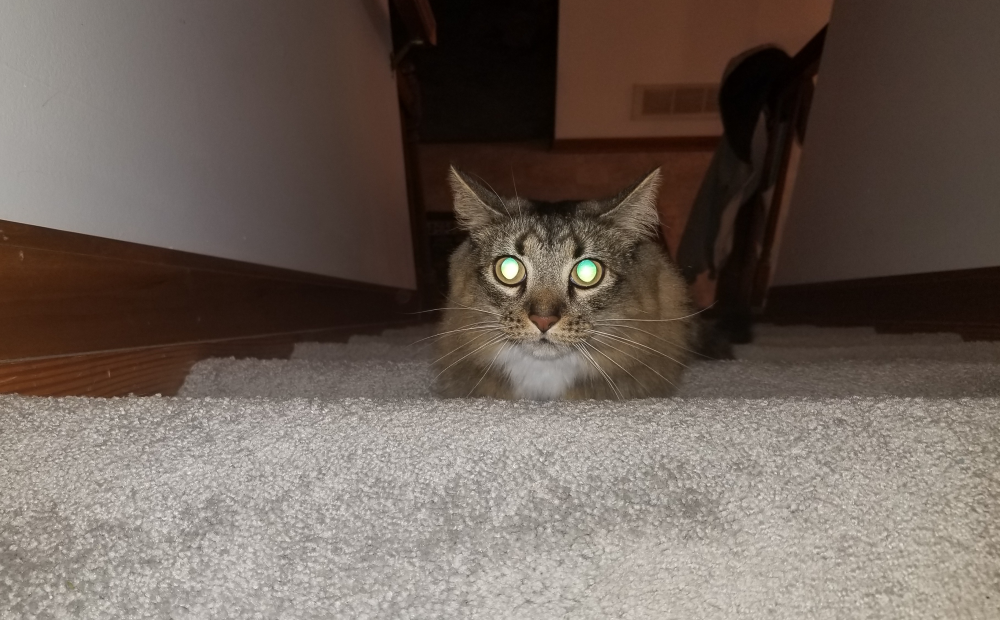If you were swimming through just the right part of the ocean as day turns to night, torch in hand, you might spot a great white shark with glowing eyes. It would be a striking sight, though possibly your last. That eerie glow reveals a fascinating feature in shark eyes, and it’s the same reason cats’ eyes sometimes appear to glow.
It all comes down to something called the tapetum lucidum, which comes from the Latin for “shining layer”. This layer sits behind the retina, acting as a reflective trampoline that effectively bounces light coming through the retina back in the direction of the photoreceptor cells, giving them a second shot at catching faint light.
The tapetum lucidum effect gives the wearers of such peepers incredible night vision, and it’s found in a wide range of species. It’s perhaps unsurprising, then, that it’s a trait shared by incredible predators like great white sharks and the domestic cats we share our homes with.
Great white sharks, Carcharodon carcharias, are known to go on the prowl during dawn and dusk when light levels are low in the water. It’s a great time of day to hunt because it means that prey are less likely to see you coming. That low light can also make things trickier for the predator, but the great white shark has evolved to overcome it. In fact, it’s thought that great white sharks have night vision that’s 10 times better than that of humans.

Every cat owner is familiar with this phenomenon.
Image credit: Adventuring Dave / Shutterstock.com
Their tapetum lucidum is made up of guanine crystals, thought to be an ancient trait that deep-sea fish have been using to manipulate light in all sorts of ways. In cats, the tapetum lucidum is made up of riboflavin-zinc crystals (FYI, a lemur‘s tapetum lucidum is also made of riboflavin), and it helps them to see while hunting on land at night when there’s only the faint light of the Moon.
The similarities in sharks’ and cats’ eye structures are thought to be an example of convergent evolution, whereby two unrelated animal groups independently evolve the same solution to a problem. In this instance, the driver was low light conditions, and the outcome? To develop a reflective layer of crystals that could bounce faint light back up to the receptors, enabling these incredible hunters to see more of their environment.
The incredible night vision does come at a cost, however, as it’s thought great white’s vision is more blurry as a result, and cats see less well in bright light as a trade-off. Still, it looks pretty damn cool, and gives you something to tell your cat the next time you’re watching JAWS together.
Speaking of, did you know it’s been 50 years of JAWS? We caught up with activist Wendy Benchley, wife of the author Peter Benchley, to find out about the epic shark flick’s legacy ahead of NatGeo Sharkfest’s JAWS @ 50.
Source Link: Why Do Cats Eyes Glow? For The Same Reason Great White Sharks’ Do, Silly